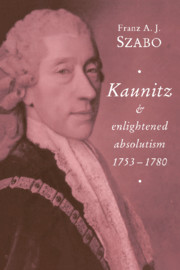1 - Introduction
Published online by Cambridge University Press: 28 August 2009
Summary
In Vienna, the capital of the sprawling Danubian Empire of the Habsburgs, the spring and summer of 1794 were not a happy time. The great revolution in France was reaching its climax. The Reign of Terror was entering its final phase and Habsburg authorities feared similar revolutionary uprisings in their own lands. A Habsburg archduchess and Queen of France had been executed the previous fall by French revolutionary authorities and, since then, the revolutionary armies were well on their way to defeating the European coalition which faced them. Again, it was Habsburg armies and Habsburg territories which were the principal victims. To many, it seemed almost inconceivable that, only a few years earlier, Austria and France had been allies; that then Vienna, not Paris, had been the locus of the most radical reforms attempted by any European government. Now all traces of that pre-revolutionary world seemed to be lost.
Yet, in the Viennese suburb of Mariahilf still lived the grizzled octogenarian architect of the erstwhile alliance with France and the driving spirit of radical reform within the monarchy: Prince Wenzel Anton von Kaunitz-Rietberg. Though still fit and alert, he was embittered, isolated and widely regarded as a living monument of bygone days. He had been principal minister of the Habsburgs for almost forty years, but in August 1792, he had submitted his resignation when he discovered that his own subordinates had deceived and betrayed him and, further, convinced a youthful new emperor to disregard his advice.
- Type
- Chapter
- Information
- Kaunitz and Enlightened Absolutism 1753–1780 , pp. 1 - 35Publisher: Cambridge University PressPrint publication year: 1994

